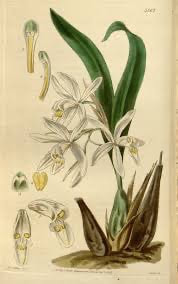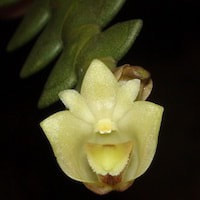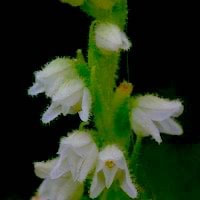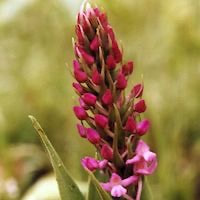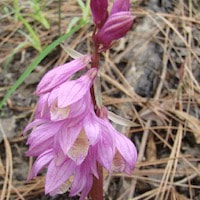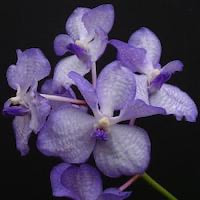WOR7- Women's Oriental 7 - So far so wood
|
Native Singaporean Orchid notes: Cattleya Walkeriana
Cattleya Walkeriana, featured in the Oriental 7 (Women) perfume workshop, gained popularity during the 2017 Gardens by the Bay show and has since been permanently added to the collection. Known as the "Queen of the Brazilian savannah," it thrives in Brazil's central plateau as an epiphyte or lithophyte. The orchid is admired not only for its beauty but also for its captivating fragrance, reminiscent of cinnamon and vanilla. Its aroma has been inherited by hybrids, making it a sought-after choice. In workshops, Cattleya Walkeriana lends elegance and relaxation, enriching the perfume with the essence of the Brazilian savannah's warmth and charm.
|
Therapeutic Orchid notes:
|
Coelogyne punctulata Lindl.
Coelogyne punctulata Lindl. is prized for both its medicinal benefits and delightful scent. In northern India, its dried pseudobulbs are powdered and used to treat wounds and burns, aiding healing and relieving discomfort. Vietnam utilizes it for dry coughs and trauma-induced bleeding due to its effective components. The orchid's fragrance, described as floral and earthy, adds to its appeal in aromatherapy and perfumery, creating a soothing ambiance. Its dual qualities make Coelogyne punctulata valuable in both traditional remedies and modern practices. |
|
Dendrobium leonis (Lindl.) Rchb.f.
Dendrobium leonis (Lindl.) Rchb.f., known for its vanilla-like scent, produces small, yellow flowers about 1 cm wide. These blooms emit a pleasant aroma when in bloom. In Thailand, the entire plant is used in traditional medicine to relieve headaches, showcasing its therapeutic value alongside its fragrance. Its dual benefits make Dendrobium leonis highly valued in cultural practices for enhancing well-being through its aromatic and medicinal properties. |
|
Goodyera R. Br.
Goodyera R. Br., also known as "rattlesnake plantain," belongs to a genus of orchids with unspecified scent characteristics. Orchids, in general, exhibit a wide range of fragrances, from sweet and pleasant to subtle or even unpleasant. These terrestrial orchids engage in a symbiotic relationship with specific fungi, relying on them for growth and survival by obtaining nutrients. This mutualistic interaction underscores the ecological importance of Goodyera R. Br. in maintaining biodiversity within their habitats, despite the specific details of their fragrance remaining undisclosed. |
|
Gymnadenia orchidis Lindl. Syn. Gymnadenia conopsea (L.) R.Br. var. yunnanensis Schltr.
Gymnadenia orchidis Lindl., a terrestrial orchid, thrives in valley thickets and forests at altitudes of 2400 to 4000 meters. It requires chilling for seed germination and has been successfully cultured in green pods. Known for its aromatic scent, Gymnadenia orchidis plays a crucial role in traditional medicine across India and Nepal. In India, it is prized for its aphrodisiac properties, while in Nepal, its pseudobulb powder treats cuts and wounds. Chinese herbal medicine also utilizes Gymnadenia orchidis for various ailments, including coughs, impotence, and liver disorders. Its fragrance, described as floral and fragrant, is enhanced by compounds like benzyl acetate and eugenol, making it a sought-after ingredient in perfumes and floral products. |
|
Nervilia gammieana (Hook.f.) Pfitzer. Syn. Pogonia gammiena Hook f.
Nervilia gammieana (Hook.f.) Pfitzer, also known as Pogonia gammiena Hook.f., is an orchid species found in the Indian Himalayas, Pakistan, and Nepal, typically growing in Garhwal and pine forests at elevations of 600–800 meters. The plant's tubers are rich in alkaloids, which are bioactive compounds with potential medicinal benefits. In traditional medicine, these tubers are processed into "salep," a starchy substance used to make soothing drinks to relieve respiratory and digestive ailments. While specific scent details are scarce, orchids like Nervilia gammieana often possess diverse and appealing fragrances, adding to their cultural and medicinal significance. |
|
Vanda coerulea Griff. ex Lindl.
Vanda coerulea Griff. ex Lindl., known as the Blue Vanda or Big-flower Ten Thousand Generation Orchid, holds cultural importance and medicinal uses across Asia. While specific scent notes are not detailed, orchids like Vanda species are known for their diverse fragrances. It's revered in China as Dahuawandai Lan for its impressive blooms, and in Thailand as Fa Mui and Pho don ya. In Myanmar, it's called Moe lone hmine, and in India's Tirap District, Rangpu. Phytochemical studies reveal compounds like imbricatin and gigantol, suggesting antioxidant properties and skin protection from UV rays. It's used in herbal medicine for treating dysentery, diarrhea, skin diseases, and eye lesions in northeastern India, underscoring its cultural and medicinal significance. |
Other scent note
Top of white chocolate, dark chocolate, violet, fresh white musk, Cepes, black pepper, Calamus, Tonka Beans
Scentopia Library Reference ingredient
Moon Flower - Check details at Scentopia's scent library
Download the guided mediation that works best with this Orchid fragrance oil
| women_oriental_essential_oil_orchi_00007.mp3 | |
| File Size: | 41640 kb |
| File Type: | mp3 |

